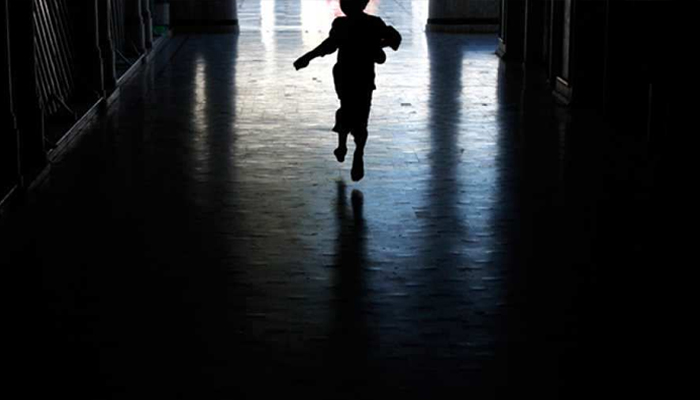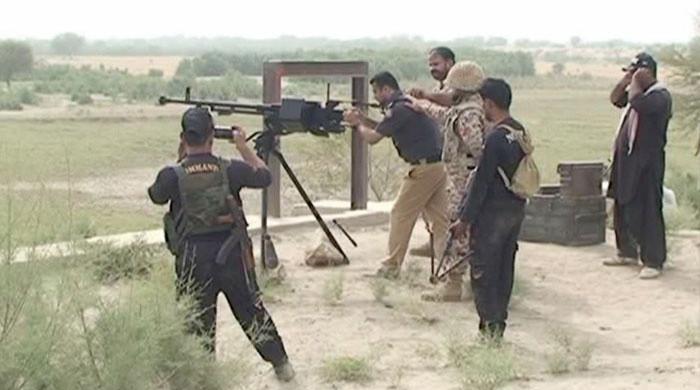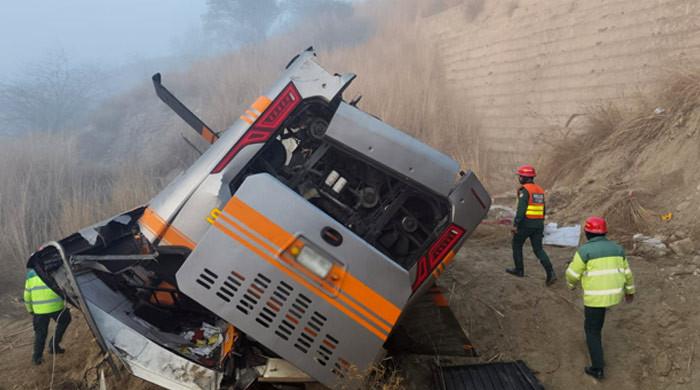Majority of minors abused in Punjab are boys: report
Around 69% of reported cases — from Jan to July 15 — involved minor boys
July 14, 2023

- 55% perps were victims' neighbours, 13% relatives, 32% strangers.
- Gujranwala reports most incidents from Jan-July 2023.
- Rawalpindi and Lahore reported the lowest rape cases.
LAHORE: In a shocking revelation, the Punjab interior department has recently shared that as the instances of sexual abuse of children rise, more boys than girls become victims of such crimes.
A report compiled on the numeration of such cases from January to June 15, 2023, reveals that in a span of less than six months, 1,390 cases of child abuse were reported in the province — a harrowing number in itself but made worse by further revelations.
According to the report, around 69% (959 cases) of the reported cases involved minor boys, while the remaining 31% (431 cases) involved girls.
Yet more disturbing were revelations of the perpetrators.
Moreover, the report stated that of those facing trials, 55% were the victims' neighbuors, 13% were relatives, and 32% were strangers.
Regarding the city-wise prevalence of child abuse cases, the report stated that most rape cases in Punjab were registered in Gujranwala, where 220 cases were reported.
Rawalpindi and Lahore reported the lowest rape cases at 69 and 89, respectively.
Furthermore, DG Khan reported 199 incidents; Faisalabad 186; Multan 140; Bahawalpur 129; Sheikhupura 128; Sahiwal 127; and Sargodha 103.
Causes of rise in child abuse
According to the report, child sexual abuse is influenced by a range of social factors in Pakistan, and patriarchal norms, power imbalances, poverty, illiteracy and social inequalities contribute to the vulnerability of the children.
Former National Child Rights Commission (NCRC) chairperson Afshan Tehseen seconds this. In a conversation with Geo.tv, she said that the prevalence of child abuse was caused directly by poverty.
Several people from poor backgrounds have no qualms about sending their children to work, many for merely one meal a day, she said, adding that the more such vulnerable children are exposed, the more likely they are to be exploited.
Moreover, she said that the rise in the number of male victims could be attributed to the fact that many households are already protective of their girls; boys, however, have more mobility in society, resulting in an increased probability of exploitation.
Additionally, the report stated that victim-blaming attitudes and a lack of awareness about child rights compounded the challenges faced in addressing and preventing such crimes.
Addressing the problem
While the report enumerates several steps taken by governments to address child sexual abuse — such as the Criminal Law (Amendment) Act of 2016, the Prevention of Child Abuse Act of 2018 and the Zainab Alert, Response, and Recovery Act 2020 — it points out that effective implementation, enforcement, and coordination among relevant agencies are crucial to ensure justice for victims and punishment for the perpetrators.
1) Sensitising Child Protection and Welfare Bureau (CPWB)
The report suggested that the CPWB, inter alia — the primary stakeholders for the protection of the children — be further sensitised and directed to be more active because of the prevailing situation.
"It should have a dedicated team of the professionals and the motivated officials including the child protection officers, psychologists, law officers and doctors for the protection of the children from abuses and rehabilitation of the victims", the report recommended.
2) Comprehensive approach
The report further stressed the need for a comprehensive mechanism for coordination among the various major stakeholders, including police, parents, CPWBs and other relevant federal and provincial agencies.
3) Sensitisation, capacity building
Another recommendation shared by the report includes the sensitisation and capacity building of the stakeholders and staff of relevant agencies through training programmes.
These programmes could be conducted for professionals working with the children, such as teachers, healthcare providers, law-enforcement agencies' personnel and social workers, to enhance their skills in identifying the signs of abuse, responding sensitively and providing appropriate support.
4) Awareness campaigns
The report urged the importance of awareness campaigns on social and entertainment avenues and recommended that such campaigns be conducted on print and electronic media to educate the masses.
5) Coordination between helplines
The reports also strongly suggested that all helplines at the provincial level be coordinated and that the domestic violence helpline 1099 be linked with the police department.
6) Establishing a database
"A database of abducted/missing children should be developed for analysis and policy recommendations," the report stated.
7) Reviewing existing apparatus
"National and provincial legislatures need to review the existing child protection laws while reforming the existing apparatus," the report stated, adding that the government establish special courts for child abuse cases and enhance the capacity and training of law-enforcement agencies and judicial system to handle such cases effectively.
It further proposed a review of the role of the human rights ministry, stating: "The ministry should play its role to revamp the national child protection centre to identify, prevent and report issue of child abuse", the report states.
8) Holistic support services
The report also added that there was a need for holistic support services, including counseling, medical assistance, legal aid and rehabilitation programmes.
These programmes, it stated, must be made available to the child survivors and their families to aid their recovery and reintegration into society.










